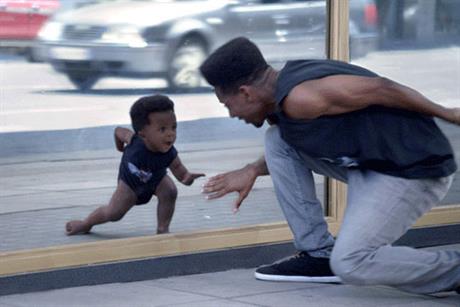
It’s been 50 years since Gatorade was created by a team of University of Florida scientists to help the Gators football team stay hydrated. Since then, the sports drink giant has created a beverage category that helps athletes replenish lost electrolytes. The brand kicked off its half-century birthday celebrations with a commercial titled “50” that highlights memorable moments in its history. While I’m not familiar with most of the memorable moments, the folks over at Slate have captured these 50 Gatorade memorable moments (link here). The commercial highlights some athletes multiple times, as it would appear that some athletes have been critical to Gatorade’s place in history. Will the brand embrace more retro ads this year? It seems they have already done so. Check out the Gatorade “50” commercial below:
After releasing this ad to close off 2014, Gatorade also went retro with another one of their more recent advertisements. They have gone back to one of the brand’s most popular athletes to help commemorate their birthday. Near mid-February, Gatorade released a remastered version of their “Be Like Mike” Micheal Jordan commercial. Jordan was one of the company’s first athlete spokespersons, and serves as a symbol of their longstanding partnership with the NBA. See the new (old) commercial below:
This isn’t the first time that Gatorade has gone back to Micheal Jordan or retro advertisements to tout the brand’s place in sports. Consumers certainly still connect with Micheal Jordan as one of basketball’s greatest athletes, and the athlete himself can be seen with Gatorade products frequently through his successful NBA career. Putting a second focus on something that has worked well in the past is also nothing new in the advertising world. Brands go back to defining moments to stir up nostalgia in hopes of recreating the magic.
This would make sense for Gatorade since the hydration segment has become fragmented in the years since its inception. Next to Powerade are energy drinks, coconut water, flavored water, and a host of other alternatives. Consumers have more beverage choices now when it comes to hydration and recovery. Gatorade’s competition is stronger than ever, and it would serve the brand well to remind consumers of why it mattered to them in the first place. And to help remind them, Gatorade is also bringing back Citrus Cooler, one of its discontinued but more popular drink flavors. Further cementing the retro theme, Citrus Cooler will return in old Gatorade bottles and labels.
Gatorade has accumulated a rich history over the past 50 years and has developed a dominant market position relative to its main competitor. Bringing back a sports icon to commemorate a birthday is one thing and a great first step. For their next act, Gatorade must search out new moments to relate to today’s athletes and consumers.










